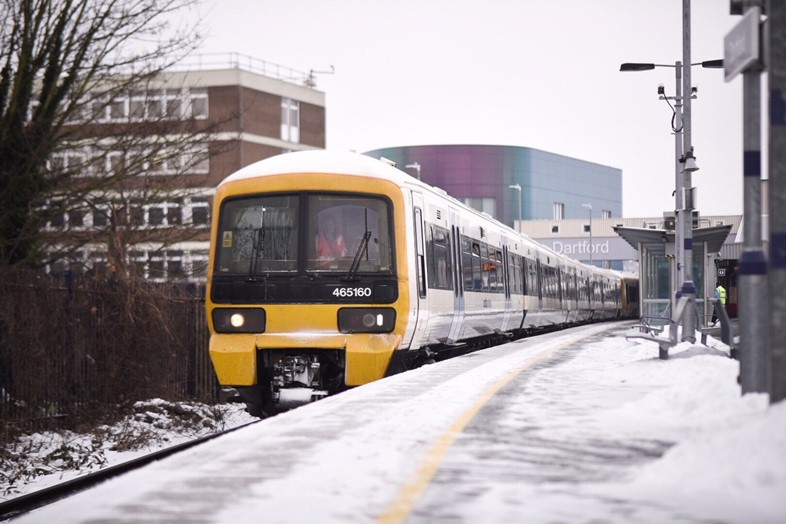The report, by consultants Arthur D Little and Southwood Rail Consulting, examines the circumstances behind an incident on Friday 2 March, at the end of a week of extremely cold weather, including snow, ice and freezing rain over much of the UK. A number of trains became stranded near Lewisham station and passengers climbed down onto the tracks.
Southeastern and Network Rail commissioned an independent report of the incident. Today’s report recommends improvements to command and control arrangements, and says industry procedures for stranded trains need revisiting to avoid a similar incident in the future.
While railway staff worked hard to get an unprecedented situation under control, the independent investigators identify lessons to be learned in managing disruption and ensuring the wellbeing of passengers.
In particular, the report provides recommendations in co-ordinating communications between different organisations, and in sharing information more effectively with those on trains.
Southeastern and Network Rail recognise that the events of 2 March were unacceptable and regrettable. We welcome the report’s findings and pledge to implement all of its recommendations.
Together we have identified a number of improvements and changes which are already underway:
- Network Rail and Southeastern will deliver new training for more than 3,500 staff based on an ongoing independent review of command and control structures and procedures. This training will include scenario simulation of major incidents to ensure staff are well-rehearsed on emergency procedures.
- Network Rail is investigating expanding the installation of conductor rail heating to include key locations, like Lewisham, which although not prone to freezing could potentially benefit from heating in extreme weather events. A trial of a more effective anti-icer on Network Rail's fleet of snow and ice treatment trains will also be carried out. In addition, Southeastern is exploring the use of ice-breaker shoes on some passenger trains.
- Network Rail and Southeastern are working with specialist consultants on planning and preparation for severe weather. This will include examining the criteria needed to decide if trains should be running in extreme weather, such as the snow and icy conditions experienced in March.
- Southeastern is examining engineering changes to extend train battery life, meaning train communications systems and lighting could stay on longer if the third rail power system is unavailable.
- We are also improving how we communicate during extreme winter weather. This includes investment in improved systems for providing information to passengers; revised protocols for communication between teams on the ground and control centres; more effective procedures for liaising between different organisations involved in any future incident.
In a joint statement, David Statham, Managing Director of Southeastern, and John Halsall, Network Rail’s South East Route Managing Director, said: “Winter weather conditions in 2018 were the most challenging we’ve seen in the south east for more than a decade. Unfortunately this led to a very serious incident in Lewisham, and we’re determined to learn from what happened.
“We sincerely apologise to passengers for what was an unpleasant and distressing experience. Our staff worked exceptionally hard in extremely difficult circumstances, but the number of trains involved in this incident made it difficult to co-ordinate a response.
“Both Southeastern and Network Rail are taking steps to minimise the possibility of this happening again. We are improving our management of extreme weather, examining ways to keep the power on when conductor rails fail and updating our procedures for communicating with passengers in an emergency.
“We would like to emphasise that the safest option for passengers is to remain on board and await help, even in the exceptionally unusual scenario of a train getting stuck between stations.”
The independent investigation was chaired by Mike Sowden, a chartered civil engineer and independent transport consultant, who has worked with clients including Balfour Beatty, HS2, South West Trains and Irish Republic Railways, with support from Stephen Watson, Principal at global management consultancy Arthur D. Little.
The remit of the report was agreed in consultation with consumer bodies London TravelWatch and Transport Focus, as well as with trade unions.
Enquiries:
Network Rail press office
Paul Dent-Jones
020 3357 7969
Southeastern press office
0330 095 9091


